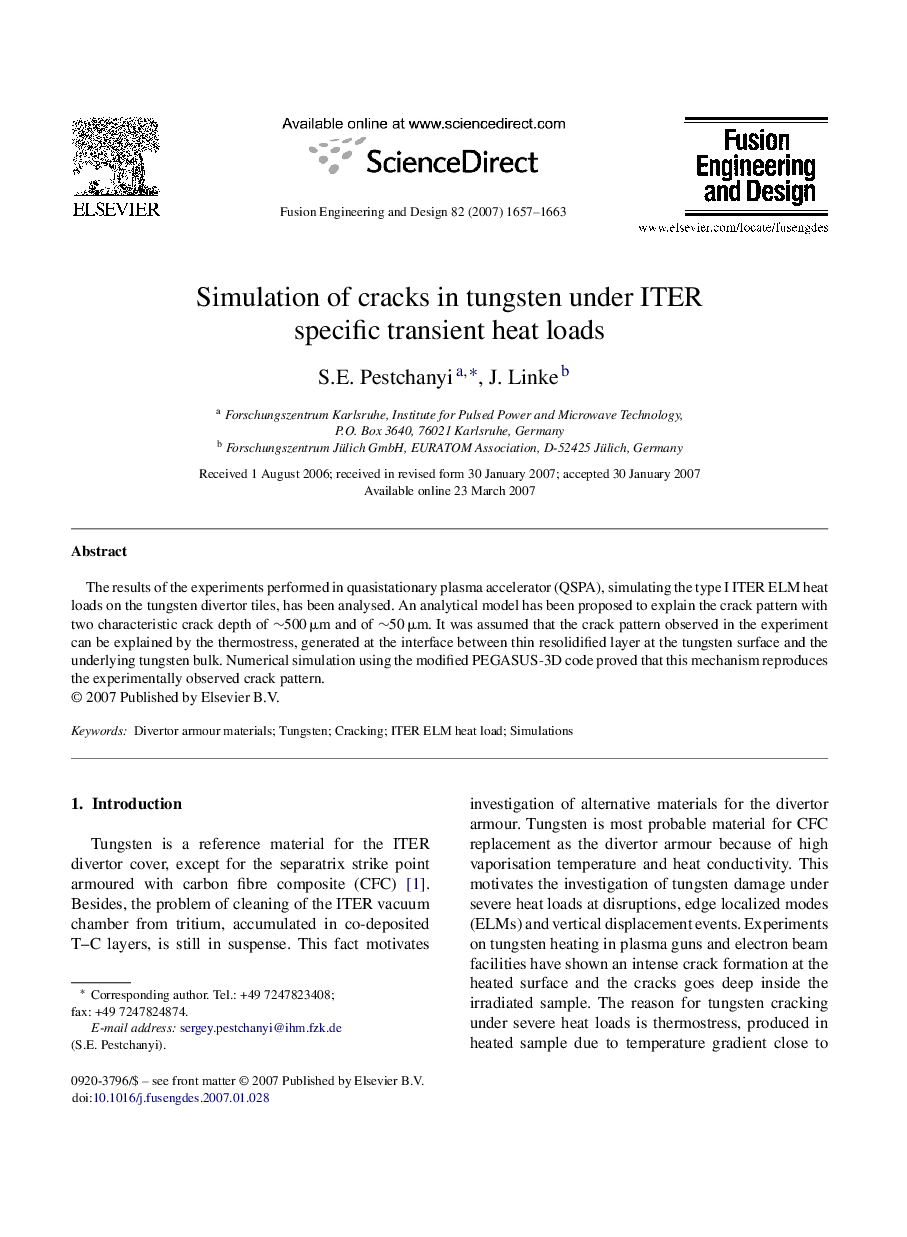| Article ID | Journal | Published Year | Pages | File Type |
|---|---|---|---|---|
| 273547 | Fusion Engineering and Design | 2007 | 7 Pages |
Abstract
The results of the experiments performed in quasistationary plasma accelerator (QSPA), simulating the type I ITER ELM heat loads on the tungsten divertor tiles, has been analysed. An analytical model has been proposed to explain the crack pattern with two characteristic crack depth of ∼500 μm and of ∼50 μm. It was assumed that the crack pattern observed in the experiment can be explained by the thermostress, generated at the interface between thin resolidified layer at the tungsten surface and the underlying tungsten bulk. Numerical simulation using the modified PEGASUS-3D code proved that this mechanism reproduces the experimentally observed crack pattern.
Keywords
Related Topics
Physical Sciences and Engineering
Energy
Energy Engineering and Power Technology
Authors
S.E. Pestchanyi, J. Linke,
